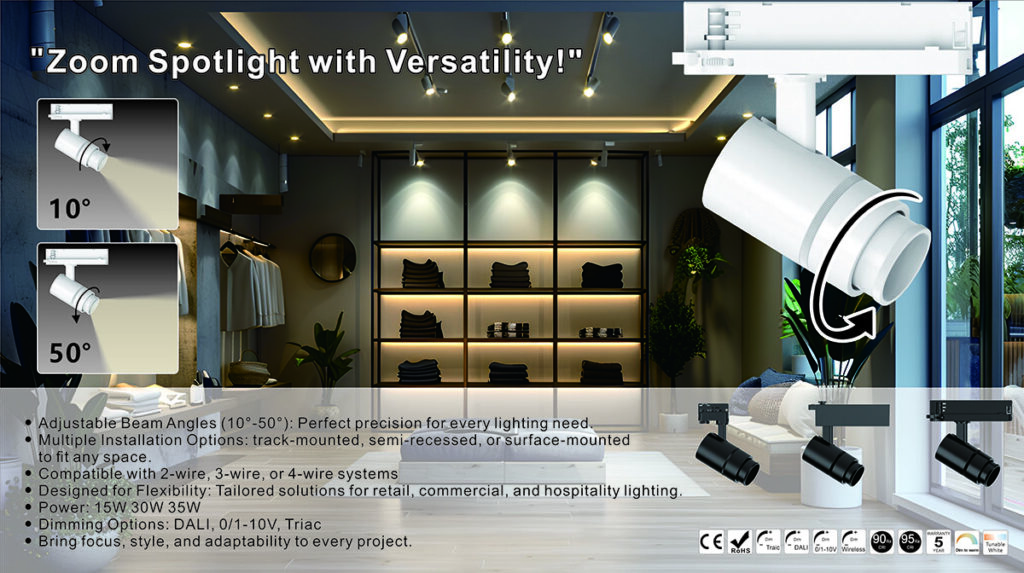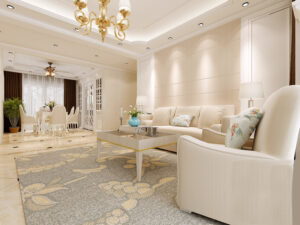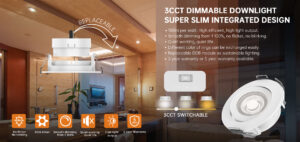Selecting the right LED track lighting system shapes the mood, functionality, and efficiency of any space—whether in a retail showroom, office, gallery, or home. As LED technology transforms the European lighting landscape, the choice between 1 phase and 3 phase track lighting systems has never been more important. This decision impacts lighting design, energy efficiency, installation flexibility, and long-term maintenance. With stricter EU energy regulations, evolving user preferences, and a growing focus on sustainability, understanding these systems’ differences is essential for architects, facility managers, and homeowners alike.
This comprehensive guide explores the technical distinctions, practical advantages, and ideal applications of both 1 phase and 3 phase LED track lighting systems. We also introduce Radians Lighting, a leading manufacturer renowned for customization, design excellence, and rigorous quality control. By the end, you will have the knowledge needed to make a well-informed, future-proof choice for your next lighting project.
Introduction to LED Track Lighting Systems
LED track lighting offers versatile, energy-efficient illumination solutions that can be adapted to various interior designs. Track lighting consists of a rail or track mounted on ceilings or walls, with adjustable light fixtures that can be repositioned along the track. This flexibility makes it popular in spaces requiring focused or dynamic lighting, such as galleries, retail stores, offices, and modern homes.
The choice between 1-phase (single-phase) and 3-phase (three-phase) track lighting systems primarily depends on your lighting control needs, installation complexity, and budget. Each system has unique electrical configurations that affect how lights are powered and controlled.

Understanding 1-Phase and 3-Phase Track Lighting Systems
1-Phase Track Lighting System
A 1-phase track lighting system uses a single electrical phase to power all the fixtures on the track. This means all lights share the same circuit and can only be turned on or off simultaneously. The track contains two wires: a phase wire (live) and a neutral wire.
Key Features of 1-Phase Systems
- Electrical Configuration: Single circuit powering all lights.
- Control: Lights operate together; no independent control.
- Installation: Simpler and more cost-effective.
- Applications: Ideal for residential spaces or small commercial areas with straightforward lighting needs.
- Flexibility: Fixtures can be moved along the track but cannot be controlled separately.
- Design: Typically minimalist and aesthetically pleasing, fitting modern interiors.
- Cost: Lower initial investment and installation cost.
The simplicity of 1-phase systems makes them popular for users seeking an easy-to-install, economical lighting solution without the need for complex lighting control.
3-Phase Track Lighting System
A 3-phase track lighting system divides the track into three independent electrical circuits, each powered by a different phase (L1, L2, L3), plus a neutral wire. This configuration allows multiple lighting groups on the same track to be controlled independently.
Key Features of 3-Phase Systems
- Electrical Configuration: Three separate circuits within one track.
- Control: Independent switching and dimming of lights on different phases.
- Installation: More complex wiring and higher installation cost.
- Applications: Suitable for commercial, retail, hospitality, and larger office spaces requiring flexible lighting schemes.
- Flexibility: Enables zone-specific lighting, enhancing ambiance and product presentation.
- Load Capacity: Supports more fixtures over longer distances without performance loss.
- Energy Efficiency: Allows selective lighting use, reducing energy consumption.
- Design: Often integrated seamlessly into architectural designs with a professional appearance.
3-phase systems are preferred where lighting needs vary across zones or times, such as retail stores highlighting different products or restaurants adjusting ambiance throughout the day.

Comparison of 1-Phase and 3-Phase Track Lighting
| Feature | 1-Phase Track Lighting | 3-Phase Track Lighting |
|---|---|---|
| Electrical Circuits | Single circuit | Three independent circuits |
| Control | All lights controlled together | Independent control for each circuit |
| Installation Complexity | Simple, fewer wires | Complex, requires multi-wire power cable |
| Cost | Lower initial cost | Higher initial cost |
| Flexibility | Limited lighting control | High flexibility in lighting arrangement |
| Suitable Applications | Residential, small commercial | Retail, hospitality, large commercial spaces |
| Load Capacity | Limited | Higher load capacity |
| Energy Efficiency | Less efficient due to simultaneous operation | More efficient with selective lighting |
| Fixture Variety | Moderate | Wide variety available |
| Aesthetic Integration | Minimalist and functional | Seamlessly integrated with architectural design |
| Typical European Use Cases | Small apartments in Amsterdam, where simplicity is key; Copenhagen boutiques focusing on minimalist design; Berlin home offices emphasizing cost-effectiveness and ease of installation | High-end retail stores in Paris, needing adaptable displays; Restaurants in Rome, creating distinct ambiances; Corporate offices in London, demanding flexibility for different departments and energy efficiency |
This table summarizes the core differences, helping you assess which system aligns with your project requirements.
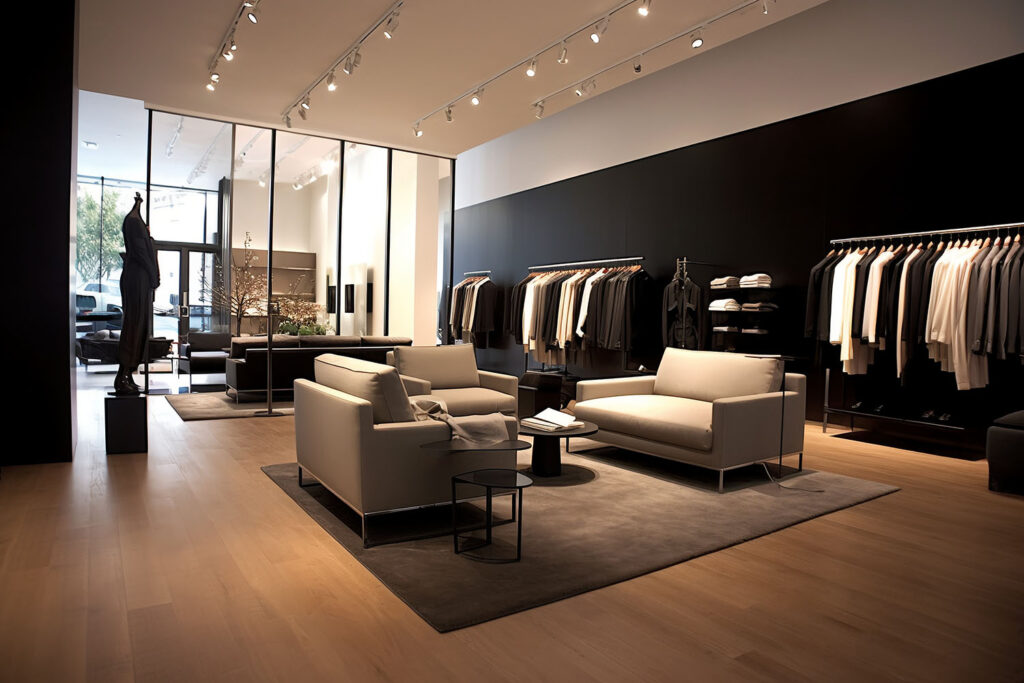
Factors to Consider When Choosing Between 1-Phase and 3-Phase Systems
Lighting Control Needs
If your project requires simple on/off control with all lights operating simultaneously, a 1-phase system is sufficient. For spaces needing zone-specific control, dimming, or dynamic lighting scenes, a 3-phase system is necessary.
Installation and Budget
1-phase systems are easier and cheaper to install due to fewer cables and simpler wiring. 3-phase systems require more complex installation and higher upfront costs but offer long-term benefits in flexibility and energy savings.
Space and Application Type
- Residential and Small Offices: 1-phase systems provide adequate lighting with minimal complexity.
- Retail, Hospitality, and Large Offices: 3-phase systems support diverse lighting needs, enhancing customer experience and operational efficiency.
Energy Efficiency and Sustainability
3-phase systems enable targeted lighting, reducing unnecessary energy use. This aligns with European energy regulations like the Ecodesign Directive and ERP energy labeling, which promote sustainable lighting solutions. Radians Lighting prioritizes sustainable lighting, advocating for a circular economy and offering energy-efficient options. Radians Lighting is dedicated to environmental responsibility, ensuring our products align with EU energy efficiency standards.
Understanding Electrical Wiring Configurations for Track Lighting: 1-Phase vs. 3-Phase
Choosing the right wiring configuration is crucial for safe and effective track lighting. This article explains the differences between 1-phase and 3-phase systems, including the all-important ground (earth) wire, to ensure compliance with European standards.
Why Wiring Matters for Track Lighting
Different wiring systems support varying levels of power, control, and safety. Understanding these configurations helps you select the correct system for residential, commercial, or industrial applications.
Key Components: Wires Explained
- L (Live/Phase): Carries the alternating current (AC).
- N (Neutral): Provides the return path for the current.
- PE (Protective Earth/Ground): Essential for safety, providing a path for fault currents to prevent electric shock. Required by European regulations (IEC 60364, BS 7671).
1-Phase Wiring Configurations
1-Phase 2-Wire (L + N) – Basic (Outdated)
Description: This is the most basic single-phase circuit. However, modern electrical codes require a separate ground wire, making this configuration largely obsolete for new installations.
Note: It is no longer compliant with modern safety standards without a separate PE wire.
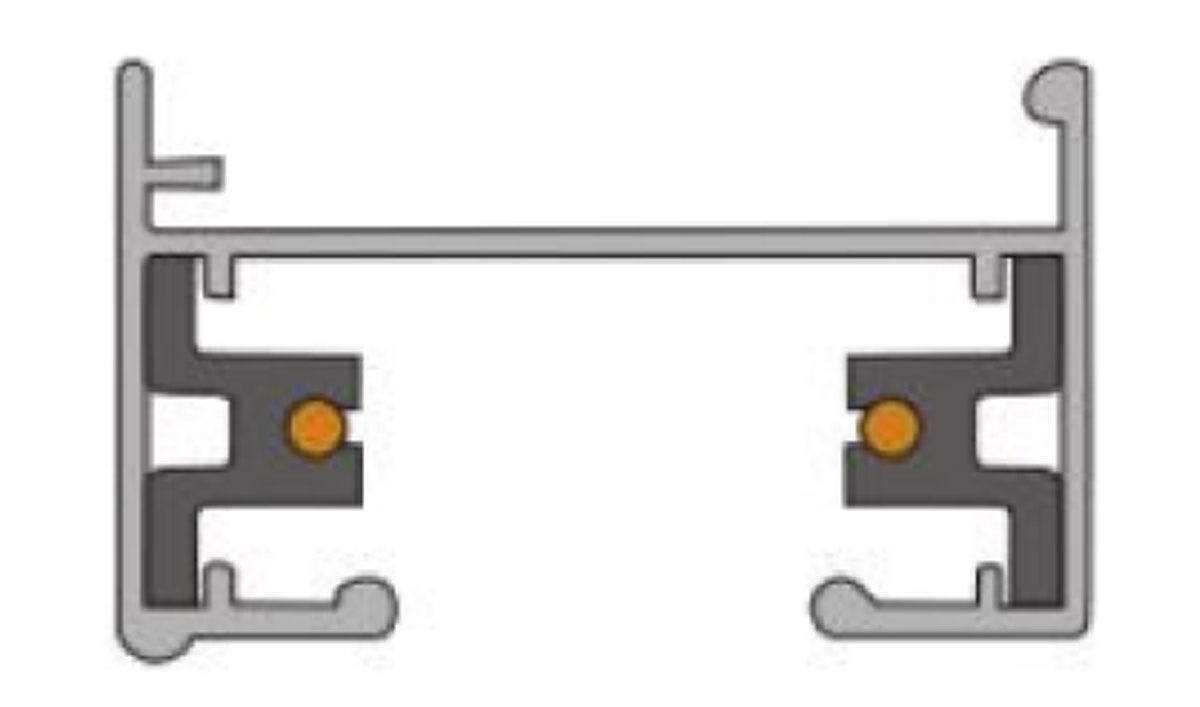
1-Phase 3-Wire (L + N + PE) – Standard Modern
Description: The standard and safest option for modern residential and commercial lighting circuits in Europe. The ground wire (PE) is mandatory for all fixed wiring.
Typical Application: All modern LED track lighting installations, ensuring safety and compliance.

3-Phase Wiring Configurations
3-Phase 4-Wire (L1 + L2 + L3 + N) – Older/Industrial
Description: This configuration allows both three-phase and single-phase loads. However, a separate ground wire is essential for meeting modern safety standards.
Note: A separate PE wire is required to be compliant with modern safety standards.

3-Phase 5-Wire (L1 + L2 + L3 + N + PE) – Modern Standard
Description: This is the modern European standard for three-phase wiring. It combines operational flexibility with enhanced electrical safety.
Typical Application: All compliant commercial and industrial LED track lighting systems, including in retail spaces and offices.
3-Phase 6/8-Wire – Advanced Control Systems
Description: Some advanced track lighting systems include additional wires for control protocols such as DALI, 0-10V dimming, or smart lighting functions.
Typical Application: Smart lighting systems, commercial buildings with advanced automation, and scenarios using protocols such as DALI.

A Quick Comparison
| System Type | Typical Wires | Ground Included | Typical Use Cases | Notes |
|---|---|---|---|---|
| 1-Phase 2-Wire | L, N | No* | Basic, old residential circuits | Modern code requires separate PE wire |
| 1-Phase 3-Wire | L, N, PE | Yes | All modern residential/commercial lighting | Standard for safety in Europe |
| 3-Phase 4-Wire | L1, L2, L3, N | No* | Older/industrial, some machinery | Modern code requires separate PE wire |
| 3-Phase 5-Wire | L1, L2, L3, N, PE | Yes | Commercial/industrial lighting, large track lights | European standard for safety |
| 3-Phase 6/8-Wire | L1, L2, L3, N, PE, others | Yes | Smart/controlled lighting systems | Extra wires for control/dimming/automation |
Why the Ground (Earth) Wire is Non-Negotiable
- Safety First: The ground wire protects from electric shock by providing a safe path for fault currents.
- Legal Requirement: European wiring standards (IEC 60364, BS 7671) mandate a protective earth in all fixed installations.
- Quality Assurance: All reliable LED track lighting systems, including those from Radians Lighting, include a ground wire for compliance and safety.
Practical Examples for Track Lighting
- 1-Phase Track:
- Wiring: L (Live), N (Neutral), PE (Earth)
- Application: Residential and small commercial spaces
- 3-Phase Track:
- Wiring: L1, L2, L3, N, PE (Earth)
- Application: Retail, galleries, offices, and large installations
- Advanced Track:
- Wiring: L1, L2, L3, N, PE, plus control wires (e.g., DALI, 0-10V)
- Application: Smart lighting, commercial buildings with advanced automation
Radians Lighting: Excellence in LED Track Lighting Solutions
Radians Lighting is a leading provider of high-quality LED track lighting systems tailored for the European market, including Germany, the Netherlands, France, Sweden, Denmark, Norway, and the United Kingdom. With a strong emphasis on customization, design innovation, and rigorous production quality control, Radians offers lighting solutions that meet diverse architectural and functional demands.
Radians specializes in both 1-phase and 3-phase track lighting systems, ensuring clients find the perfect fit for their lighting projects. Their products combine energy efficiency, aesthetic appeal, and advanced control options to create optimal lighting environments. As a leading LED track light manufacturer, Radians is dedicated to quality and innovation. Radians is recognized among the top 10 track light manufacturers in Europe.
Product Customization and Quality Control
Radians Lighting provides bespoke design services, allowing customers to tailor track lengths, fixture types, color temperatures, and dimming capabilities. The company’s strict quality control processes guarantee reliable performance and compliance with European safety and energy standards, including CE certification and ERP compliance. Radians is committed to maintaining high standards for color consistency, ensuring lighting solutions meet stringent SDCM requirements.
Featured Products and Categories
- 1-Phase LED Track Systems: Ideal for residential and smaller commercial spaces, offering simplicity and cost-effectiveness.
- 3-Phase LED Track Systems: Designed for complex commercial environments requiring flexible and dynamic lighting control.
- Accessories and Connectors: A wide range of connectors and mounting options to create customized track layouts.
Explore Radians Lighting’s full range of track lighting products to find solutions that enhance your space’s functionality and style. Consider decorative track lighting, dimmable track lighting, or modern LED track lighting to meet your specific needs. Radians also specializes in smart lighting solutions, offering advanced control options for enhanced energy efficiency and user experience. Explore the future of smart lighting with Radians.
Installation and Maintenance Considerations
Installation Tips for 1-Phase and 3-Phase Systems
- 1-Phase Systems: Require connection to a single power source with phase and neutral wires. Installation is straightforward, with fewer safety concerns and lower labor costs.
- 3-Phase Systems: Need a five-wire power cable (three phases, neutral, and earth). Installation must be performed by qualified electricians familiar with multi-phase systems to ensure safety and compliance with local electrical codes.
Maintenance and Upgrades
Both systems benefit from LED technology’s long lifespan and low maintenance. However, 3-phase systems offer easier upgrades and reconfiguration without rewiring, supporting future lighting needs and technological advancements.
Application Insights and Examples
1-Phase Track Lighting Applications
| Application | Benefits and Considerations | Radians Lighting Product Suggestions |
|---|---|---|
| Residential Living Rooms | Creates cozy atmospheres with adjustable accent lighting. Ideal for highlighting artwork and architectural details. | Small Track Lighting for minimalist design; Dimmable options for creating different moods. |
| Kitchens | Provides focused task lighting over countertops and islands, enhancing visibility and safety. | Kitchen Track Lighting with high CRI for accurate color rendering; Water-resistant options for safety. |
| Small Retail Boutiques | Showcases merchandise with flexible display lighting. Adjustable track heads allow easy highlighting of new arrivals. | Track lights with adjustable beam angles to focus on key products; Energy-efficient options to reduce operating costs. |
| Home Offices | Offers focused lighting for workspaces, reducing eye strain and improving productivity. | Track lighting positioned to minimize glare on screens; Options with adjustable color temperature for optimal comfort. |
| Bathrooms | Provides ambient and task lighting, illuminating vanity areas and shower spaces evenly. | Water-resistant track lights for safety; Dimmable options for creating a relaxing atmosphere. |
| Relevant European Examples |
|

3-Phase Track Lighting Applications
| Application | Benefits and Considerations | Radians Lighting Product Suggestions |
|---|---|---|
| Retail Stores | Enhances product displays with focused lighting. Different phases highlight specific product categories. | Commercial Track Lighting for durability; Adjustable spotlights for accentuating products. |
| Art Galleries and Museums | Provides precise lighting control to showcase artwork, adjusting light levels for each piece. | Track lights with adjustable color temperatures to enhance colors; Options for UV protection. |
| Restaurants | Creates ambiance with layered lighting schemes, controlling dining, bar, and accent lighting separately. | Dimmable track lights to set different moods; Options with warm color temperatures for a cozy atmosphere. |
| Offices | Offers flexible lighting solutions for open-plan workspaces, illuminating workstations, meeting areas, and break rooms independently. | Track lights with adjustable brightness and color temperature; Options for human-centric lighting. |
| Hospitality (Hotels) | Adjusts lighting in lobbies and common areas throughout the day, creating welcoming and energy-efficient environments. | Smart lighting systems for automated control; Options with adjustable dimming and color temperature. |
| Exhibition Spaces | Ensures products are well-lit, drawing maximum attention from potential customers at trade shows. | High-intensity track lights; Adjustable spotlights for showcasing specific products; Portable track lighting systems for easy setup. |
| Relevant European Examples | Parisian fashion boutiques highlighting new collections; Roman trattorias setting different moods for lunch and dinner; London corporate offices using flexible lighting solutions |

Additional Considerations for European Markets
Color Temperature
When selecting track lighting, consider the color temperature (CCT) and Color Rendering Index (CRI) to achieve the desired ambiance and accuracy.
Color Temperature (CCT): Measured in Kelvin (K), CCT affects the warmth or coolness of the light.Warm White (2700K-3000K): Creates a cozy and inviting atmosphere, suitable for living rooms and bedrooms.
Neutral White (3500K-4000K): Provides a balanced and natural light, ideal for kitchens and offices.
Cool White (5000K-6500K): Offers a bright and energizing light, suitable for retail spaces and task lighting.
Refer to Radians’ guide on choosing the right light color temperature for more information.
CRI
Color Rendering Index (CRI): Measures how accurately a light source renders colors compared to natural light. A CRI of 80 or higher is recommended for most applications. High CRI (90+): Essential for retail and art galleries where accurate color representation is critical.
Recommended CCT and CRI for Different Applications
| Application | Recommended CCT (K) | Recommended CRI |
|---|---|---|
| Living Room | 2700K-3000K | 80+ |
| Kitchen | 3000K-4000K | 85+ |
| Retail Store | 4000K-5000K | 90+ |
| Art Gallery | 3500K-5000K | 95+ |
| Office | 3500K-4000K | 80+ |
UGR (Unified Glare Rating)
Ensure lighting systems have a low UGR to minimize glare, especially in office environments. Refer to Radians’ guide on UGR lighting knowledge.
IP Rating
Select appropriate IP ratings for different environments, especially bathrooms and outdoor areas (refer to IP rating guide).
Human-Centric Lighting
Consider implementing human-centric lighting solutions that adjust color temperature and brightness throughout the day to promote well-being and productivity (learn more about human-centric lighting).
Lumen vs. Lux
Understand the difference between lumens (total light output) and lux (light intensity on a surface) to ensure adequate illumination for different tasks (refer to Radians’ explanation of lumen vs. lux).
Conclusion: Making the Right Choice for Your Lighting Needs
Choosing between 1 phase and 3 phase LED track lighting systems should be guided by the specific needs of your space, your budget, and your long-term plans. 1 phase systems offer simplicity and cost-effectiveness for smaller, more static environments. In contrast, 3 phase systems provide the flexibility, control, and scalability required for larger or more dynamic settings.
Radians Lighting stands as a trusted partner for European customers, offering customized solutions, cutting-edge design, and uncompromising quality control. By working with a reputable manufacturer and understanding the technical and practical differences between these systems, you can ensure that your lighting installation delivers both immediate and lasting value.
For more information, explore Radians Lighting’s comprehensive track lighting resources or contact their expert team for personalized advice.

